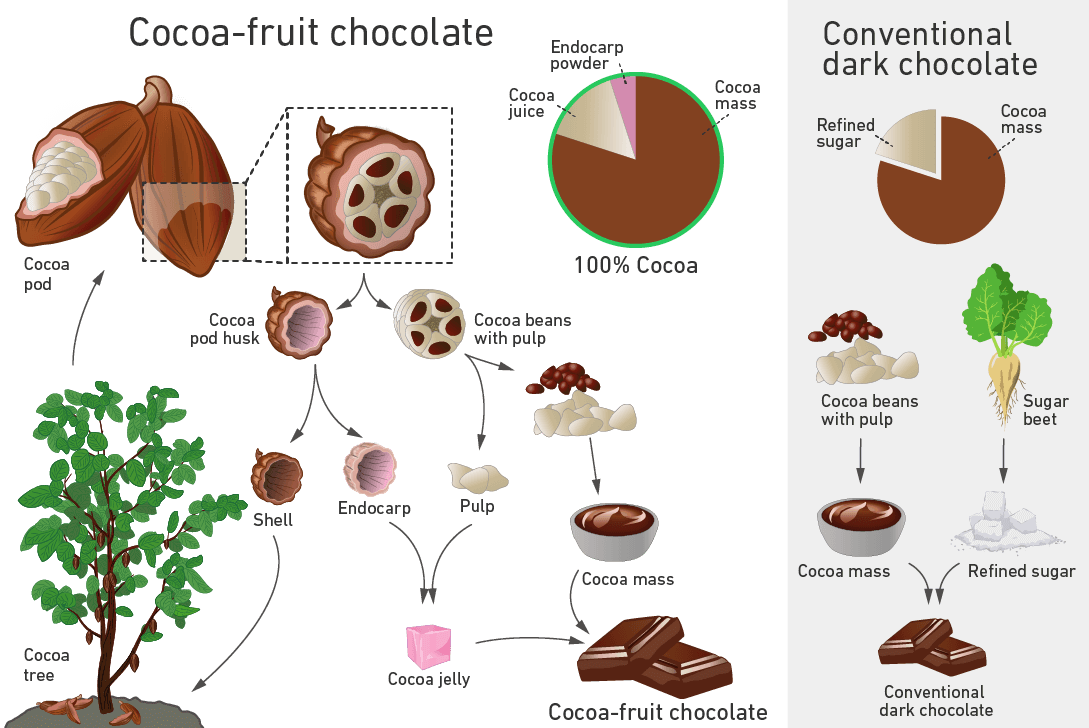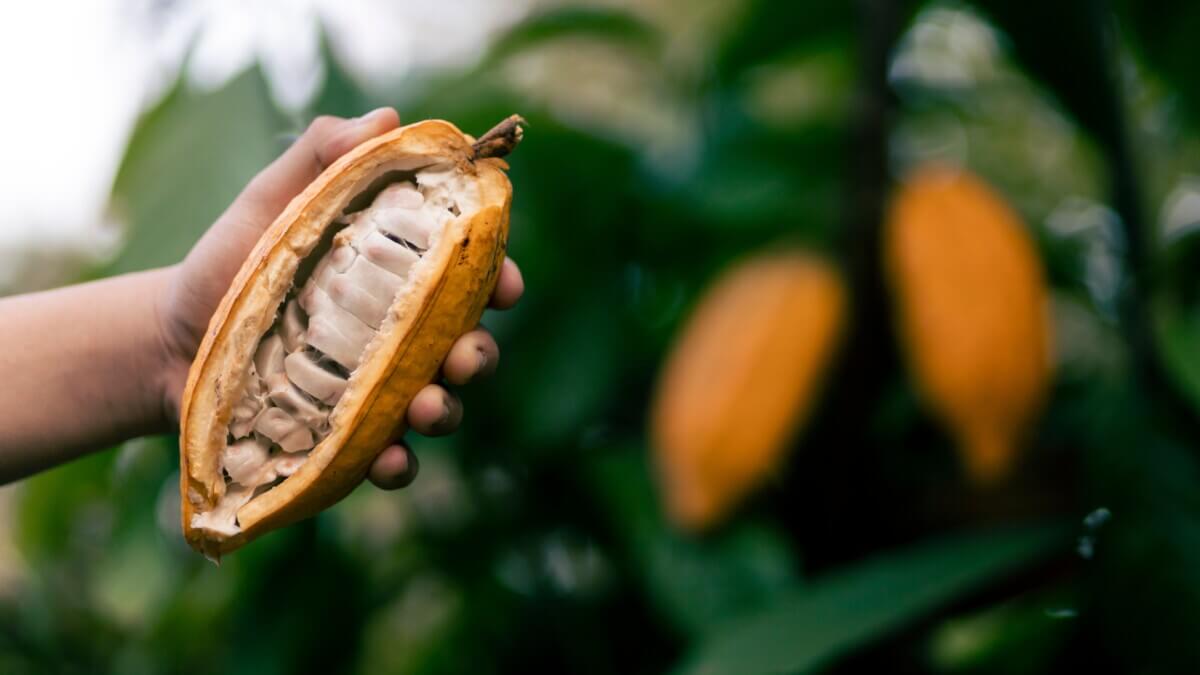
Healthy candy bars? How ‘whole-fruit chocolate’ could revolutionize sweet
ZÜRICH, Switzerland — Chocolate is one of life’s greatest pleasures, but it’s a treat that often comes with a side of guilt. Conventional chocolate is high in sugar and saturated fat, which can contribute to health issues like obesity and heart disease. On top of that, the environmental impact of cocoa production is a growing concern, with deforestation and greenhouse gas emissions threatening the sustainability of this beloved indulgence. But what if there was a way to enjoy chocolate that was not only healthier but also kinder to the planet?
Enter the “whole-fruit chocolate” developed by a team of researchers in Switzerland. This innovative creation makes use of the entire cocoa pod, including parts that are usually discarded, to create a chocolate that boasts improved nutritional value and a lower environmental footprint.
In conventional chocolate production, only cocoa beans are used, while the pulp and husk typically being thrown away or used as fertilizer. The research, published in Nature Food and led by Kim Mishra from the Institute of Food, Nutrition, and Health at ETH Zürich, saw an opportunity to turn this waste into a valuable ingredient.
The key to their approach is a gel made from the cocoa pod husk and pulp. The husk, or endocarp, is dried and ground into a powder, while the pulp is pressed for its juice and then concentrated. The two components are then combined and heated to form a gel that can be mixed with cocoa mass to create the final chocolate product

The resulting whole-fruit chocolate has some impressive nutritional benefits. The gel replaces traditional sugar from sugar beets, reducing the overall sugar content. The husk powder also adds dietary fiber, which is lacking in conventional chocolate. Additionally, whole-fruit chocolate has a lower amount of saturated fatty acids compared to traditional chocolate candies.
However, the benefits don’t stop there. A life cycle assessment conducted by the researchers shows that large-scale production of whole-fruit chocolate could significantly reduce land use and global warming potential compared to the average dark chocolate produced in Europe. This is because the whole-fruit approach makes use of parts of the cocoa pod that would otherwise go to waste, resulting in a more efficient use of resources.
The researchers also highlight the potential socio-economic benefits for cocoa-producing regions. By creating value from previously discarded parts of the cocoa pod, farmers could diversify their income streams and reduce their reliance on cocoa bean sales alone. The whole-fruit chocolate production process also presents opportunities for technology transfer and capacity building in these communities.

Of course, taste is king when it comes to chocolate, and the researchers didn’t neglect this crucial factor. A sensory evaluation comparing whole-fruit chocolate to conventional dark chocolate found that the new formulation was just as sweet to taste testers despite having a lower sugar content. The increased fiber content and reduced saturated fat didn’t seem to detract from the enjoyment of the chocolate.
As with any new food innovation, there are still some hurdles to overcome before whole-fruit chocolate can hit the shelves. The current production process is energy-intensive, particularly the drying of the cocoa pod husk. However, the researchers are confident that efficiency improvements and the use of renewable energy could make the process more sustainable at scale.
“Although we’ve shown that our chocolate is attractive and has a comparable sensory experience to normal chocolate, the entire value creation chain will need to be adapted, starting with the cocoa farmers, who will require drying facilities,” says study author Kim Mishra in a media release. “Cocoa-fruit chocolate can only be produced and sold on a large scale by chocolate producers once enough powder is produced by food processing companies.”
StudyFinds Editor-in-Chief Steve Fink contributed to this report.
No comments:
Post a Comment